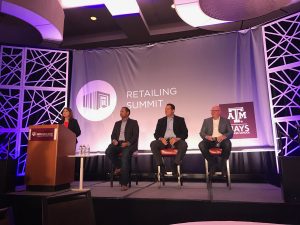NectarOM recently conducted a Marketing Personalization Survey in partnership with the Texas A&M Retailing Summit. This survey inquired about each company’s existing personalization efforts and which initiatives they are currently using, as well as their primary obstacles to implementation and where they hope to be in the future. Over 75 percent of respondents to this survey said that they were either in the process of putting omnichannel personalization methods in place, or that it was on the roadmap for the upcoming year. With such a large majority of companies still in the inception phase of their omnichannel journey, the outcomes from this survey give us an important glimpse into of where these businesses are with their omnichannel strategy and where they hope to be in the near future.
Among the many revealing takeaways from the survey, some of the most enlightening outcomes center around how company leaders rate weigh their current personalization initiatives, as well as what methods they feel need to implemented in order to keep up with their competitors.
Current State of Affairs
One of the most important factors impacting putting personalization methods in place is how familiar and amenable company leaders are with those methods. While over 58 percent of survey respondents said that their company leaders are familiar with the concept of personalization, another 42 percent said that the exposure level varies with various leaders within their organization. Similarly, 50 percent of respondents felt their company leaders know how to execute a personalized marketing campaign, while 40 percent said that the answer was dependent upon the individual company leader in question.
Most survey respondents (70 %) replied that they rank their organization at a medium level of maturity in their marketing personalization efforts. When asked what tools they are currently using to collect and manage consumer data, the leading answers were customer relationship management software (CRM) and data management platforms (DMP), with nearly 64 percent of respondents saying that they are currently using both platforms.
Room for Greatness
Beyond each company’s existing capabilities, NectarOM also asked survey respondents where they see the most opportunity for growth. A whopping 70 percent of companies said that they are using or are interested in using a distribution platform to personalize their marketing campaigns. This includes distribution platforms such as an email service provider, mobile app push, or website widget. This number was closely followed by other personalization solutions including CRM, DPM, and content management systems (CMS), which were each marked as a priority for 60 percent of survey respondents.
In addition, when asked where they see an existing opportunity for omnichannel implementation over 83 percent of respondents marked evolving to meet customer expectations as the primary reason for building their omnichannel offerings, while more than 58 percent of respondents replied that their top reason for building personalization initiatives would be to focus on a more customer-centric approach.
Obstacles to Implementation
The preceding statistics leave one resounding question unanswered: With so much interest in expansion through omnichannel personalization, what are the main barriers holding these companies back from full-scale implementation? While 58 percent of survey respondents feel that their companies have sufficient budgets to implement omnichannel personalization, nearly half (41%) of survey respondents don’t feel that their companies have enough allocated to get the job done.
Interestingly, 60 percent of survey respondents work for companies making over $1 million dollars a year, along with another 40 percent of survey respondents whose companies make from $100 million to over $10 billion dollars a year. Despite these substantial budgets, half of these company representatives don’t disagree with the idea that their business is behind their competitors in terms of executing personalized customer experiences.
Plan Looking Forward
Perhaps this is why in a recent Periscope Study by McKinsey, over 71 percent of respondents listed personalization initiatives as either their utmost marketing priority or among their top three foremost priorities for the coming year. Among the channels which will be used to build personalization, McKinsey survey respondents listed email and social media as their primary focus. Email is also where NectarOM survey respondents saw the most opportunity for their companies to grow their personalization efforts. In fact, 100 percent of the individuals that NectarOM surveyed checked email as the primary channel where they saw potential for activation.
These results point to an increasing awareness among company leaders of how deploying marketing personalization initiatives across existing channels such as email and social media can increase sales and build customer loyalty. What remains to be seen is how these companies deploy these initiatives in the coming year and how each business’s efforts impact both their relationships with their customers and their bottom line.
Watch our session to learn more about our survey findings.





